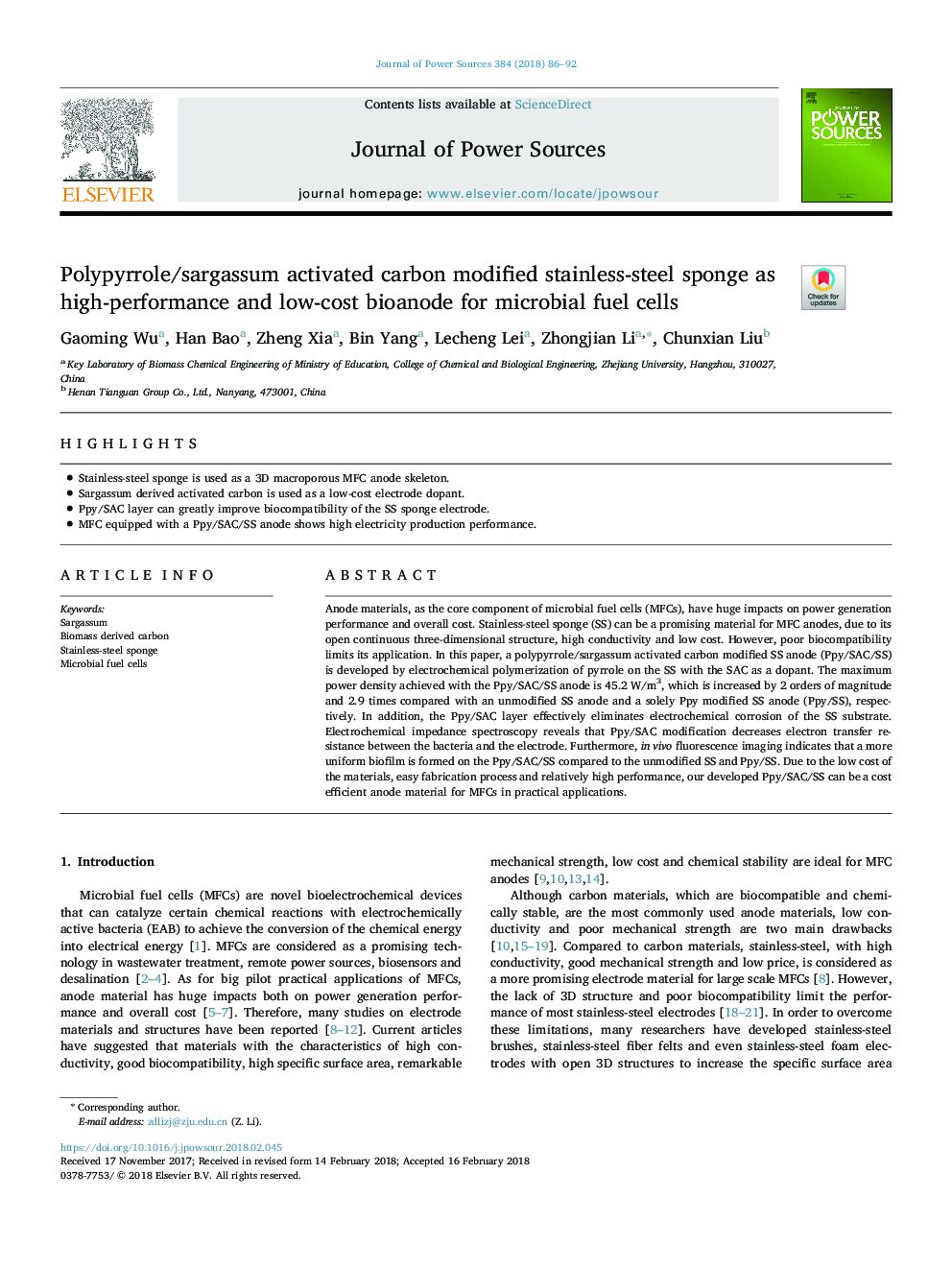| Article ID | Journal | Published Year | Pages | File Type |
|---|---|---|---|---|
| 7725469 | Journal of Power Sources | 2018 | 7 Pages |
Abstract
Anode materials, as the core component of microbial fuel cells (MFCs), have huge impacts on power generation performance and overall cost. Stainless-steel sponge (SS) can be a promising material for MFC anodes, due to its open continuous three-dimensional structure, high conductivity and low cost. However, poor biocompatibility limits its application. In this paper, a polypyrrole/sargassum activated carbon modified SS anode (Ppy/SAC/SS) is developed by electrochemical polymerization of pyrrole on the SS with the SAC as a dopant. The maximum power density achieved with the Ppy/SAC/SS anode is 45.2Â W/m3, which is increased by 2 orders of magnitude and 2.9 times compared with an unmodified SS anode and a solely Ppy modified SS anode (Ppy/SS), respectively. In addition, the Ppy/SAC layer effectively eliminates electrochemical corrosion of the SS substrate. Electrochemical impedance spectroscopy reveals that Ppy/SAC modification decreases electron transfer resistance between the bacteria and the electrode. Furthermore, in vivo fluorescence imaging indicates that a more uniform biofilm is formed on the Ppy/SAC/SS compared to the unmodified SS and Ppy/SS. Due to the low cost of the materials, easy fabrication process and relatively high performance, our developed Ppy/SAC/SS can be a cost efficient anode material for MFCs in practical applications.
Keywords
Related Topics
Physical Sciences and Engineering
Chemistry
Electrochemistry
Authors
Gaoming Wu, Han Bao, Zheng Xia, Bin Yang, Lecheng Lei, Zhongjian Li, Chunxian Liu,
